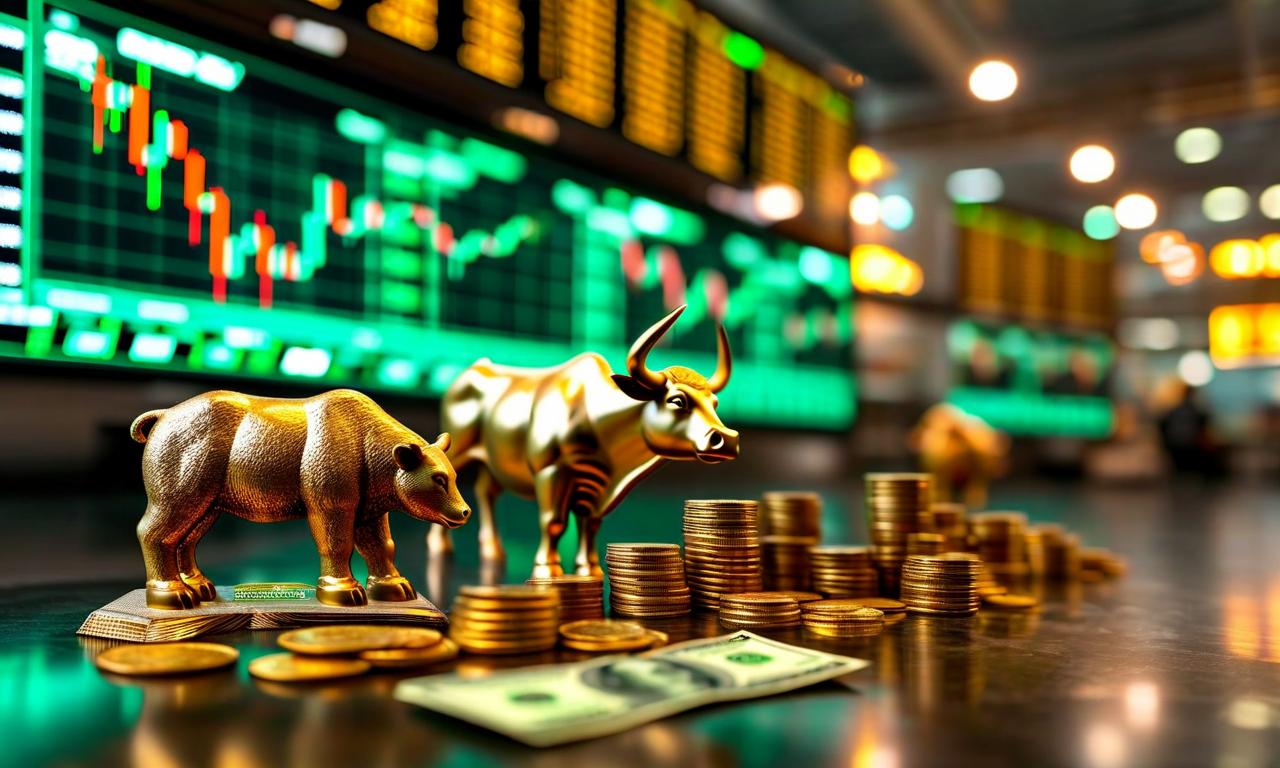Indian Stock Markets Extend Winning Streak to Six Days, Sensex Surpasses 82,000 Mark
The BSE Sensex closed at 82,000.71, up 142.87 points, while the NSE Nifty rose 33.20 points to 25,083.75. ICICI Bank and Reliance Industries led the gains. The rally was attributed to proposed GST reforms and a credit rating upgrade. FIIs were net sellers, while DIIs were net buyers. Over the six-day rally, Sensex gained 1,765 points (2.14%) and Nifty gained 596 points (2.4%).

*this image is generated using AI for illustrative purposes only.
The Indian stock markets continued their bullish run for the sixth consecutive trading session, with key indices reaching new milestones. The BSE Sensex, India's benchmark equity index, closed at an impressive 82,000.71, marking a gain of 142.87 points. Meanwhile, the NSE Nifty, another major index, rose by 33.20 points to settle at 25,083.75.
Market Movers
The day's rally was primarily driven by strong performances from blue-chip stocks. ICICI Bank and Reliance Industries emerged as the frontrunners, leading the gains among heavyweight companies. Other significant contributors to the upward momentum included:
- Bajaj Finserv
- Bajaj Finance
- Larsen & Toubro
- Bharat Electronics
However, not all stocks participated in the rally. Notable decliners included Power Grid, Eternal, Hindustan Unilever, and Adani Ports.
Factors Driving the Rally
Market experts have attributed the positive sentiment to several factors:
Proposed GST Reforms: The market is responding favorably to discussions about simplifying the Goods and Services Tax (GST) structure. The proposed reforms aim to move towards a two-slab structure with rates of 5% and 18%, potentially streamlining the tax system.
Credit Rating Upgrade: A recent upgrade in India's credit rating has boosted investor confidence, contributing to the market's upward trajectory.
Institutional Investment Trends
The day saw divergent trends in institutional investments:
- Foreign Institutional Investors (FIIs) were net sellers, offloading equities worth ₹1,100.09 crore.
- Domestic Institutional Investors (DIIs) showed confidence in the market, purchasing stocks valued at ₹1,806.34 crore.
Six-Day Rally Performance
Over the course of this six-day winning streak, both major indices have posted significant gains:
| Index | Points Gained | Percentage Increase |
|---|---|---|
| Sensex | 1,765 | 2.14 |
| Nifty | 596 | 2.4 |
Global Watch
Investors are keeping a close eye on the international front, particularly the upcoming statements from US Federal Reserve Chair Jerome Powell at the Jackson Hole Symposium. These remarks could provide insights into future monetary policy decisions and potentially impact global market sentiment.
As the Indian markets continue to show resilience and reach new heights, investors and analysts alike will be watching closely to see if this momentum can be sustained in the face of both domestic reforms and global economic factors.

























